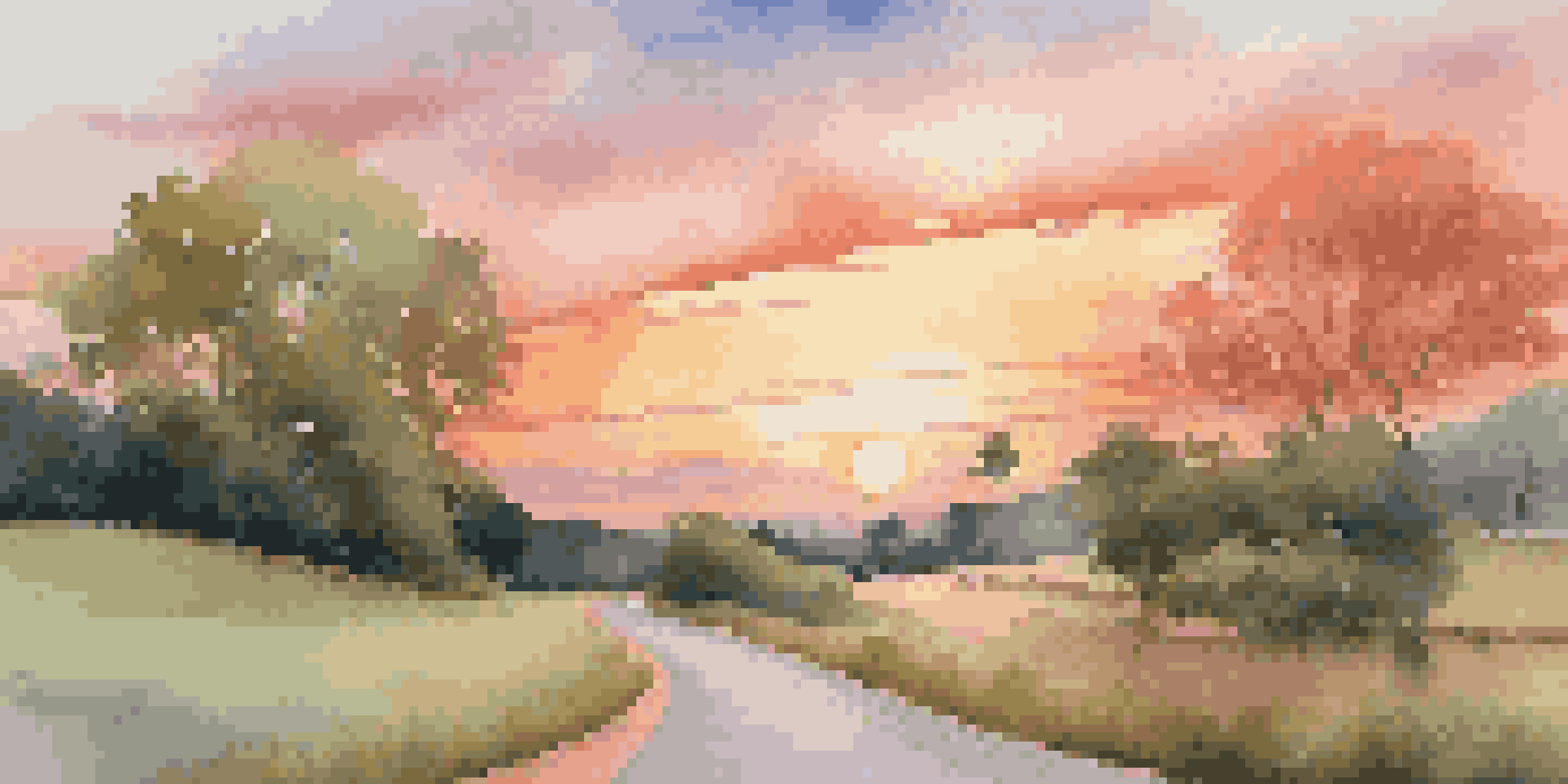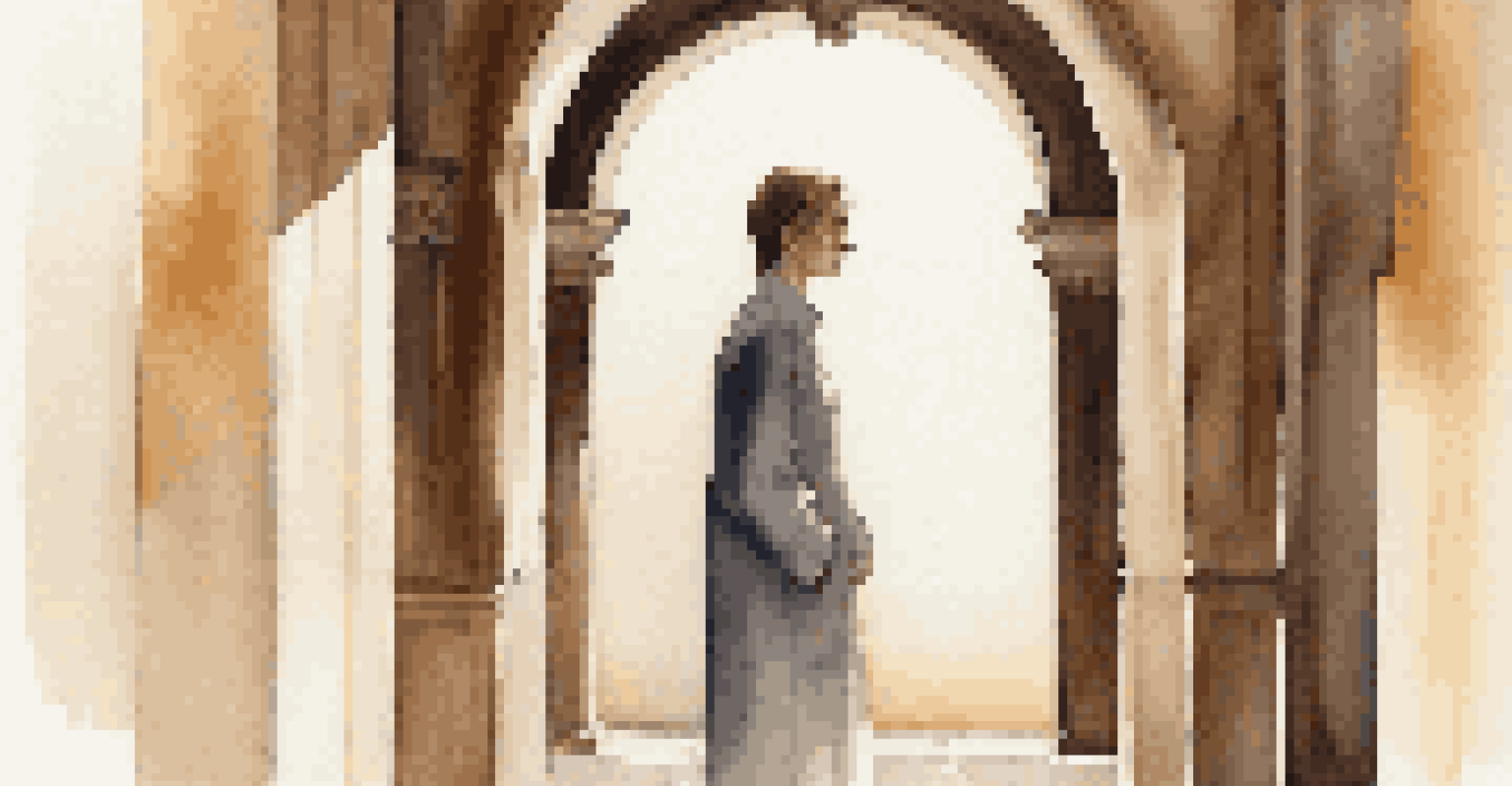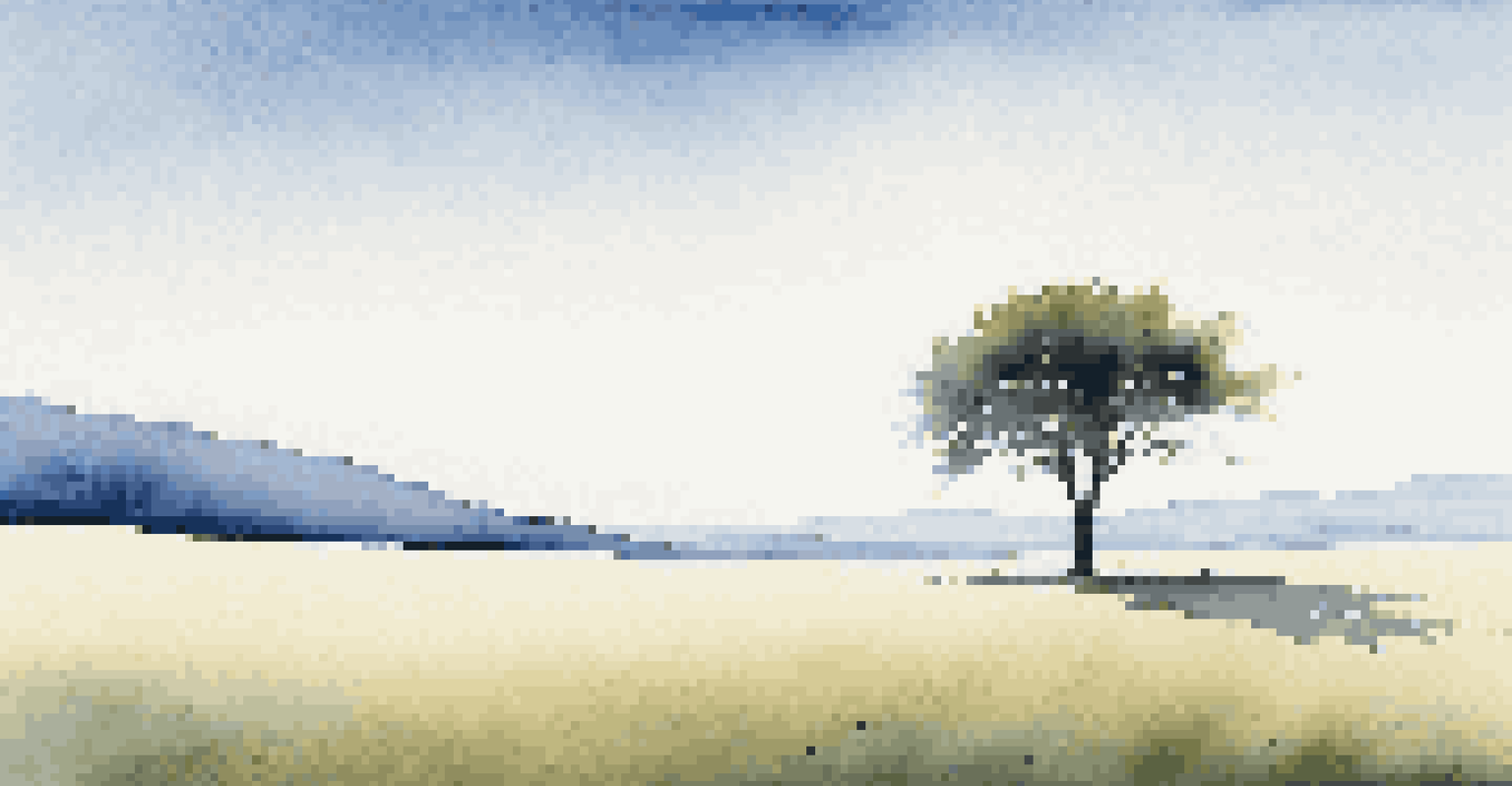Mastering the Art of Composition: Creating Balanced Photos

Understanding the Basics of Photo Composition
Photo composition is the arrangement of elements within a frame. It plays a crucial role in how your photos are perceived, guiding the viewer’s eye and conveying your intended message. Think of it as setting the stage for a play, where every actor and prop has a purpose and a place.
Composition is the master key of photography.
When you start to grasp the basics, such as the rule of thirds, leading lines, and framing, you’ll find it easier to create images that capture attention. For instance, imagine dividing your frame into a grid; placing the main subject at the intersections can make your photo more dynamic. This foundational knowledge sets the stage for more advanced techniques.
As you become more familiar with these concepts, experimentation is key. Don't hesitate to break the rules occasionally; sometimes, unique perspectives yield the most striking results. Just like in art, understanding the basics allows you to express your creativity more freely.
The Rule of Thirds: A Photographer's Best Friend
The rule of thirds is a powerful tool in photography composition. This technique suggests dividing your image into three equal parts both horizontally and vertically, creating a grid. Placing key elements along these lines or at their intersections can make your photos more balanced and engaging.

For example, if you’re photographing a landscape, position the horizon along the upper or lower third line rather than in the center. This subtle shift can create a sense of depth and draw the viewer’s eye into the scene. Think of it as balancing a scale; the off-center elements create intrigue and harmony.
Master Photo Composition Basics
Understanding key concepts like the rule of thirds and framing can significantly enhance your photography skills.
Remember, while the rule of thirds is a guideline, it’s not a strict law. Feel free to experiment! Sometimes placing your subject dead center can produce stunning results, especially in portraits where you want to emphasize the subject's expression.
Utilizing Leading Lines to Guide the Viewer
Leading lines are a fantastic technique for creating a sense of depth and directing the viewer's attention. These lines can be anything from roads and rivers to fences and pathways. They naturally draw the eye through the image, making the viewer feel as though they are part of the scene.
You don’t take a photograph, you make it.
Imagine standing at the edge of a winding road, with the path leading toward a stunning sunset. By photographing the road, you create a dynamic composition that invites the viewer to follow the journey. This technique not only enhances balance but also adds storytelling elements to your photos.
When incorporating leading lines, consider how they interact with other elements in your frame. The lines should complement your subject rather than distract from it. Experiment with different angles and perspectives to find the most effective way to utilize these lines.
Framing Techniques to Enhance Your Composition
Framing is a technique that adds depth and context to your photographs. By using elements in your environment, such as trees, windows, or doorways, you can create a 'frame within a frame' that highlights your subject. This not only draws attention but also provides a sense of place and intimacy.
For instance, if you’re taking a portrait, consider positioning the subject in a doorway or under a tree arch. The surrounding elements naturally guide the viewer’s eye toward the focal point, enhancing the overall composition. It's akin to placing a beautiful painting within an elegant frame, making it stand out even more.
Utilize Leading Lines Effectively
Incorporating leading lines in your photos can guide the viewer's eye and create a sense of depth.
As you experiment with framing, remember that the goal is to enhance your subject rather than overpower it. Be mindful of how the framing elements interact with your subject to maintain balance and clarity in your photos.
Balancing Elements for Visual Harmony
Achieving visual harmony in your photos often comes down to balancing elements within the frame. This means distributing visual weight evenly across the composition, so no single area feels too heavy or distracting. Consider how colors, shapes, and sizes interact with one another.
For example, if you have a large, dark object on one side of your photo, you might balance it with a smaller, lighter object on the opposite side. This principle is similar to balancing a seesaw; both sides need to work together to create a pleasing image. A well-balanced composition feels stable and engaging.
As you practice, pay attention to how different elements affect the overall mood of your photo. Sometimes, asymmetrical balance can create excitement, while symmetrical balance evokes calm. Understanding how to manipulate these elements is key to mastering composition.
Incorporating Negative Space for Impact
Negative space refers to the empty areas surrounding your subject, and it can be a powerful tool for emphasizing the focal point. By allowing space around your subject, you can create a sense of isolation or highlight its importance within the frame. Think of it as breathing room that enhances your subject’s presence.
For instance, a lone tree in a vast field can evoke feelings of solitude and strength when surrounded by ample negative space. This technique encourages the viewer to focus solely on the subject, creating a strong emotional connection. It's like setting a jewel against a simple background to make it shine.
Embrace Negative Space
Using negative space around your subject can emphasize its importance and evoke strong emotions.
When using negative space, be intentional. Consider how much space to leave and how it interacts with your subject. The right amount can add balance and drama, guiding the viewer’s eye where you want it to go.
Experimenting with Composition for Unique Shots
Once you've grasped the fundamentals of composition, it's time to let your creativity run wild. Don't be afraid to break the rules and experiment with different angles, perspectives, and framing techniques. Photography is an art form, and sometimes the most unexpected shots can lead to stunning results.
For example, try shooting from a low angle to capture a subject against a dramatic sky, or use reflections in water to create intriguing symmetry. Each photograph can tell a different story, and experimenting will help you discover your unique style. Think of it as exploring a new city; the more you wander, the more hidden gems you'll find.

As you venture into new territory, remember that each shot is an opportunity to learn. Analyze your work, seek feedback, and keep refining your skills. The more you practice and experiment, the more confident you’ll become in your creative choices.